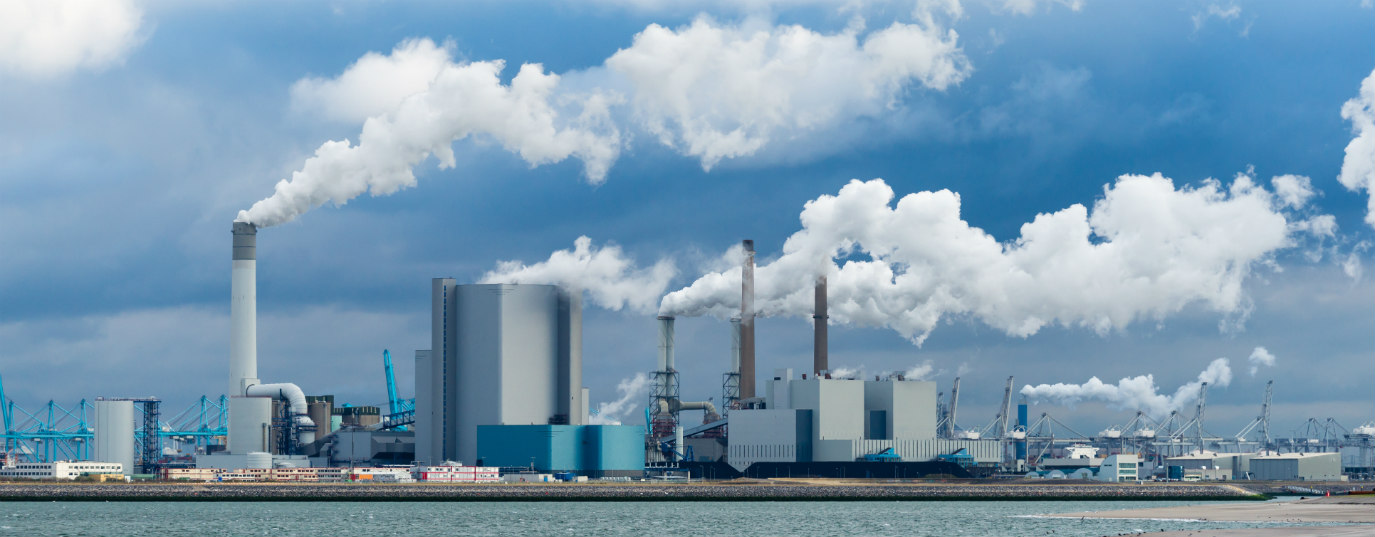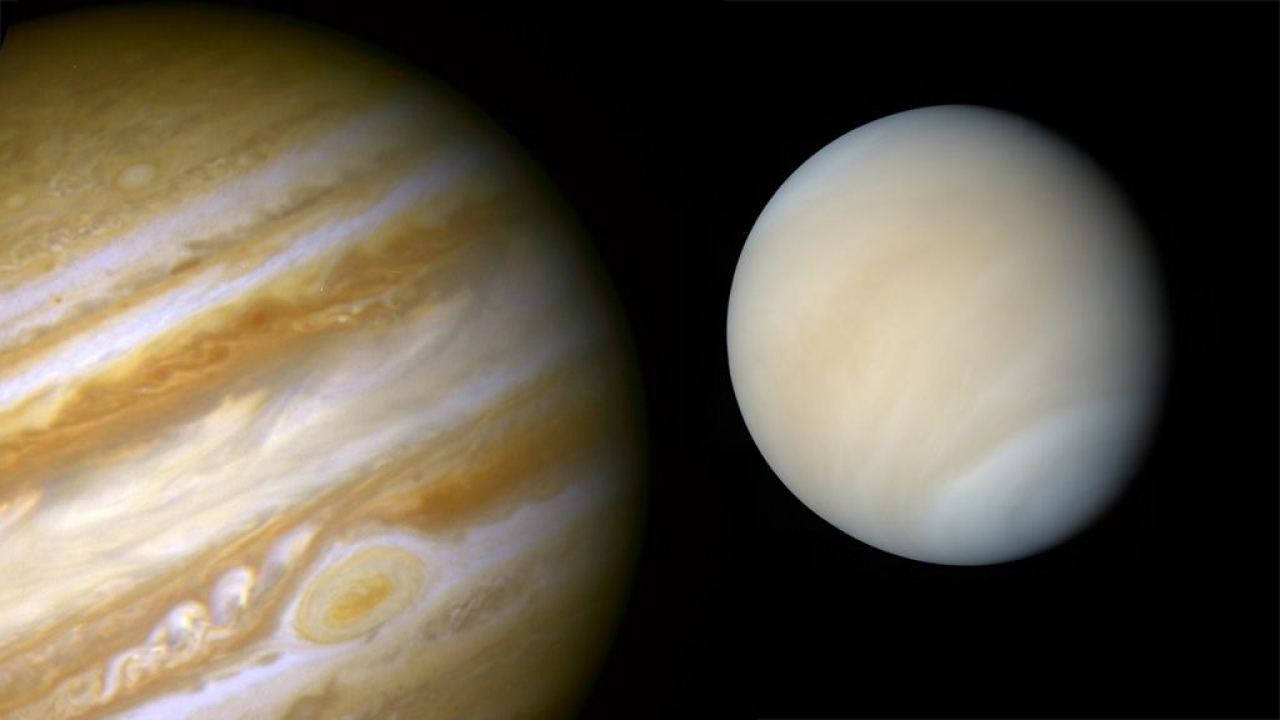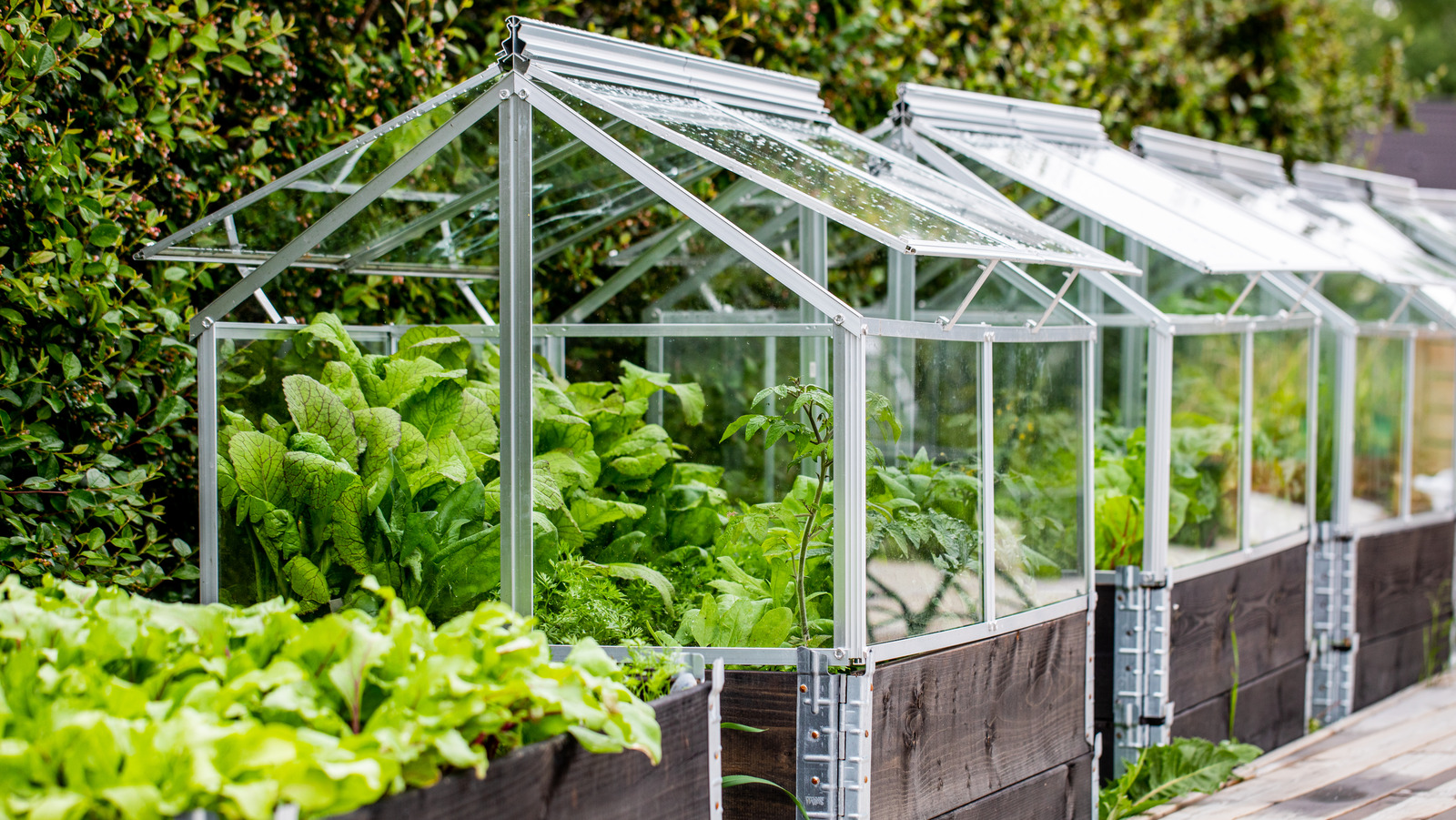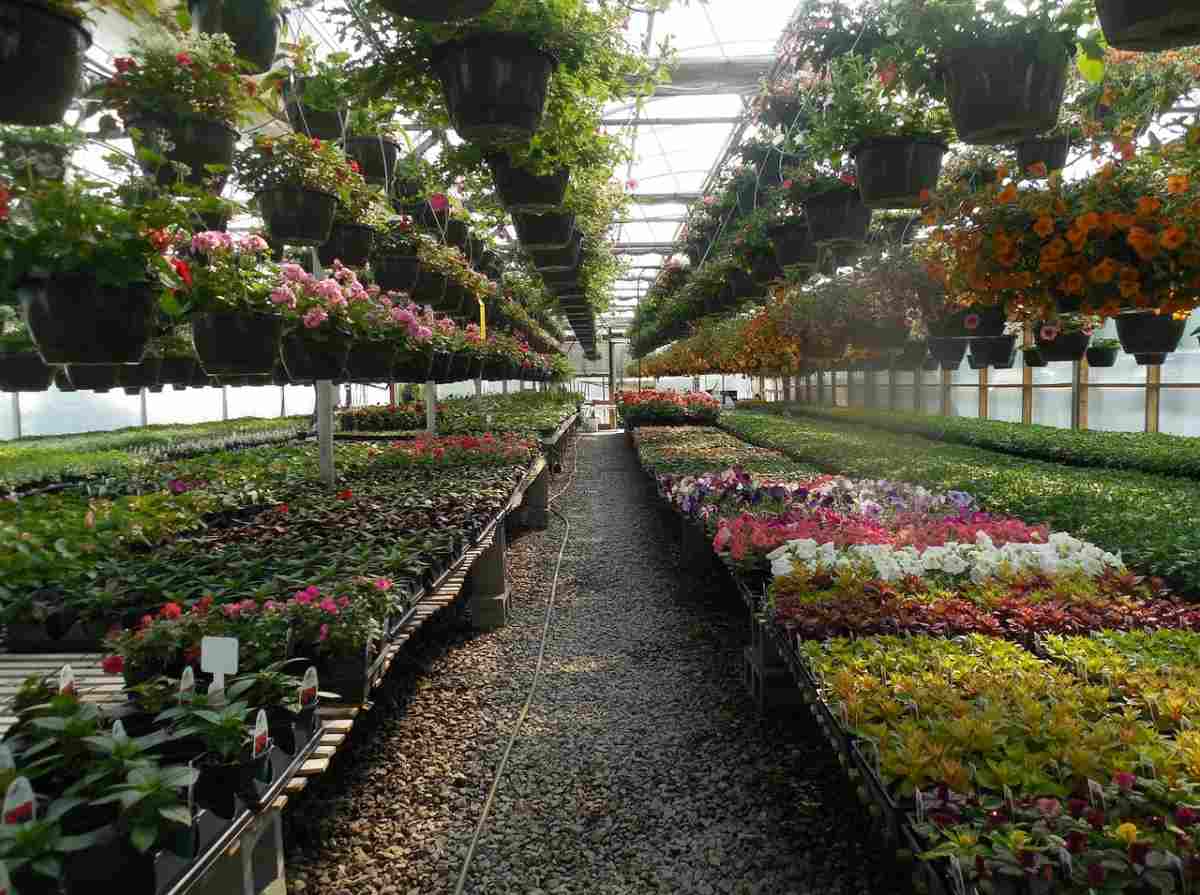Home>Gardening News and Trends>What Is Greenhouse Gasses


Gardening News and Trends
What Is Greenhouse Gasses
Modified: January 22, 2024
Stay informed with the Latest News on Greenhouse Gases. Explore the causes, effects, and solutions to tackle this pressing environmental issue.
(Many of the links in this article redirect to a specific reviewed product. Your purchase of these products through affiliate links helps to generate commission for Chicagolandgardening.com, at no extra cost. Learn more)
Table of Contents
Introduction
Welcome to the world of greenhouse gases, where the delicate balance of our planet’s climate is being drastically altered by the actions of human beings. In recent years, the term “greenhouse gases” has become a buzzword, but what exactly are they and why should we be concerned?
Greenhouse gases refer to a group of gases that trap heat in the Earth’s atmosphere, essentially acting like a blanket that keeps our planet warm. While this natural greenhouse effect is essential for life on Earth, human activities have greatly intensified the concentration of these gases, leading to significant climate change.
Scientists have identified several greenhouse gases, with carbon dioxide (CO2), methane (CH4), and nitrous oxide (N2O) being the primary culprits. These gases are released into the atmosphere through various human activities such as burning fossil fuels, deforestation, and industrial processes.
The consequences of this increase in greenhouse gases are far-reaching. As these gases accumulate in the atmosphere, they trap more heat, leading to a rise in global temperatures. This phenomenon, known as global warming, has resulted in changing weather patterns, rising sea levels, and increased frequency and intensity of extreme weather events.
Moreover, the impact of greenhouse gases extends beyond just climate change. These gases also contribute to air pollution, respiratory diseases, and ecosystem disruption. It is, therefore, crucial that we understand the sources of these gases and take action to mitigate their effects.
In this article, we will delve deeper into the definition of greenhouse gases, explore their sources, and examine the profound impact they have on climate change and the environment. We will also discuss practical ways to reduce greenhouse gas emissions and play our part in preserving the health and well-being of our planet for future generations.
Definition of Greenhouse Gases
Greenhouse gases are a group of gases that have the ability to trap heat in the Earth’s atmosphere. These gases play a vital role in maintaining the planet’s temperature and sustaining life as we know it. The greenhouse effect is the natural process by which these gases absorb and emit infrared radiation, keeping the Earth’s surface warm enough to support life.
The primary greenhouse gases include carbon dioxide (CO2), methane (CH4), nitrous oxide (N2O), and fluorinated gases. Carbon dioxide is the most well-known and abundant greenhouse gas, mainly released through the burning of fossil fuels such as coal, oil, and natural gas. Methane, although present in smaller quantities, has a much higher warming potential than carbon dioxide and is released during activities such as livestock farming, landfill decomposition, and the production and transport of coal, oil, and gas. Nitrous oxide is primarily emitted by agricultural and industrial activities, as well as through the burning of fossil fuels and solid waste. Fluorinated gases are synthetic gases produced for industrial applications and have an exceptionally high warming potential.
These greenhouse gases act like a blanket in the atmosphere, allowing sunlight to pass through and warm the Earth’s surface, but trapping a portion of the heat that would otherwise escape back into space. This leads to an overall increase in the Earth’s average temperature, which is commonly referred to as global warming.
It is important to note that greenhouse gases are not inherently bad. In fact, they are essential for maintaining a habitable climate on Earth. Without them, the planet would be too cold to support life. However, the problem arises when there is an imbalance in the concentration of these gases due to human activities. The excessive emissions of greenhouse gases have accelerated the greenhouse effect, resulting in rapid and significant climate change.
Understanding the composition and behavior of greenhouse gases is crucial for addressing climate change. By reducing greenhouse gas emissions, we can mitigate the adverse effects of global warming and work towards creating a more sustainable and environmentally friendly future.
Sources of Greenhouse Gases
Greenhouse gases are primarily released into the atmosphere as a result of human activities. These activities span a wide range of sectors, from energy production to transportation, agriculture, and industrial processes. Understanding the sources of greenhouse gas emissions is crucial for devising effective strategies to reduce their impact on the environment. Here are some of the major sources:
- Energy Production: The burning of fossil fuels, such as coal, oil, and natural gas, for electricity and heat generation is one of the most significant sources of greenhouse gas emissions. Power plants, residential heating, and industrial processes contribute to the release of carbon dioxide (CO2) into the atmosphere.
- Transportation: The use of vehicles powered by internal combustion engines, such as cars, trucks, ships, and airplanes, is a major contributor to greenhouse gas emissions. The combustion of gasoline and diesel fuels releases carbon dioxide (CO2) and other pollutants.
- Agriculture: Livestock farming, particularly cattle, is a significant source of methane (CH4) emissions. During digestion, livestock produce methane, which is released into the atmosphere. Additionally, the use of synthetic fertilizers in agriculture leads to the release of nitrous oxide (N2O).
- Deforestation and Land Use Changes: The clearing of forests for agriculture, logging, and urbanization contributes to greenhouse gas emissions. Forests act as carbon sinks, absorbing carbon dioxide (CO2) from the atmosphere. When forests are destroyed, this stored carbon is released back into the atmosphere, increasing greenhouse gas levels.
- Industrial Processes: Various industrial activities, including the production of cement, steel, and chemicals, release greenhouse gases. These processes often involve the combustion of fossil fuels and the release of potent greenhouse gases, such as methane (CH4), as byproducts.
- Waste Management: The decomposition of organic waste in landfills produces methane (CH4) emissions. In addition, the incineration of waste materials can release carbon dioxide (CO2) and other pollutants.
It is important to note that the sources and levels of greenhouse gas emissions can vary between countries and regions based on their energy profiles, industrial activities, transportation systems, and agricultural practices.
Addressing greenhouse gas emissions requires a multi-faceted approach that involves transitioning to cleaner and renewable energy sources, promoting sustainable transportation systems, implementing agricultural practices that reduce emissions, preserving forests, and improving waste management techniques. By tackling these sources, we can make significant progress in mitigating climate change and protecting our planet’s future.
Impact of Greenhouse Gases on Climate Change
The increased concentration of greenhouse gases in the Earth’s atmosphere has had a profound impact on climate change. These gases trap heat and contribute to the greenhouse effect, leading to a rise in global temperatures and a range of detrimental effects. Here are the key impacts of greenhouse gases on climate change:
- Rising temperatures: The primary impact of greenhouse gases is the overall warming of the planet. As these gases accumulate in the atmosphere, they trap more heat, resulting in a gradual increase in global temperatures. This leads to a range of cascading effects on weather patterns, ecosystems, and natural processes.
- Changes in weather patterns: Rising temperatures disrupt weather patterns, leading to more frequent and intense extreme weather events. This includes heatwaves, droughts, hurricanes, heavy rainfall, and snowstorms. These events can have devastating consequences for human communities, ecosystems, agriculture, and infrastructure.
- Rising sea levels: The warming of the planet causes the melting of glaciers and ice caps, leading to an increase in sea levels. This poses a significant threat to coastal regions, low-lying islands, and delta regions, as it can result in flooding, coastal erosion, and the intrusion of saltwater into freshwater ecosystems.
- Impact on ecosystems: Climate change disrupts ecosystems and biodiversity. Changing temperature and precipitation patterns can affect the distribution and behavior of plant and animal species, leading to habitat loss, shifts in ecosystems, and changes in natural cycles such as migration patterns and flowering times.
- Threats to human health: Climate change and the associated impacts of greenhouse gases have profound effects on human health. Heatwaves and extreme temperatures can lead to heat-related illnesses, while changes in precipitation patterns can increase the risk of waterborne diseases and the spread of vector-borne diseases such as malaria and dengue fever.
- Food security challenges: The agricultural sector is highly vulnerable to climate change. Shifts in temperature and rainfall patterns can impact crop yields, water availability, and livestock productivity. This can lead to food shortages, increased food prices, and food insecurity in many parts of the world.
These are just some of the consequences of increased greenhouse gases on climate change. It is crucial that we recognize the severity of these impacts and take immediate action to reduce greenhouse gas emissions, adapt to the changing climate, and work towards a more sustainable and resilient future.
Effects of Greenhouse Gases on the Environment
The release of greenhouse gases into the atmosphere has a wide range of destructive effects on the environment. These gases contribute to climate change, which in turn leads to various ecological disruptions and environmental consequences. Here are some of the key effects of greenhouse gases on the environment:
- Loss of biodiversity: Climate change, driven by greenhouse gas emissions, poses a significant threat to global biodiversity. Rising temperatures and altered precipitation patterns can disrupt ecosystems, leading to habitat loss and fragmentation. This can result in the reduced availability of resources for many species and an increased risk of extinction.
- Changes in ecosystems: Climate change can cause shifts in ecosystems and alter the composition and distribution of plant and animal species. Some ecosystems may be unable to adapt to rapidly changing conditions, leading to the loss of valuable habitats, reduced ecosystem services, and potential ecosystem collapse.
- Disruption of marine life: Rising temperatures and ocean acidification, linked to increased greenhouse gas emissions, have severe consequences for marine life. Coral reefs, for example, are highly vulnerable to rising temperatures, leading to widespread coral bleaching and the eventual death of these critical ecosystems. Additionally, acidification affects the ability of marine organisms such as shellfish and plankton to build and maintain their shells and structures.
- Melting glaciers and polar ice: The warming caused by greenhouse gases leads to the melting of glaciers and polar ice caps. This not only contributes to the rise in sea levels but also poses a threat to ecosystems dependent on ice, such as polar bears and other Arctic species. The loss of ice reduces habitat availability, disrupts ecosystems, and affects the delicate balance of global climate systems.
- Water scarcity and quality: Climate change can have significant implications for water resources. Changes in precipitation patterns can result in droughts in some regions and intense rainfall events in others. These extremes can disrupt water availability, affect agricultural productivity, and impact water quality due to changes in temperature and runoff patterns.
- Increased natural disasters: Greenhouse gas emissions contribute to an increase in extreme weather events, such as hurricanes, floods, and wildfires. These disasters have devastating effects on the environment, causing habitat destruction, soil erosion, and the loss of plant and animal species. They can also lead to the displacement of human populations and the destruction of infrastructure.
These effects highlight the urgent need to reduce greenhouse gas emissions and mitigate the impact of climate change on the environment. By adopting sustainable practices, conserving natural resources, and promoting environmental stewardship, we can work towards safeguarding our planet’s biodiversity and ensuring a sustainable future for generations to come.
Ways to Reduce Greenhouse Gas Emissions
To address the urgent challenge of climate change, it is essential that we take decisive action to reduce greenhouse gas emissions. By adopting sustainable practices in various sectors, we can collectively make a significant impact in mitigating climate change. Here are some key ways to reduce greenhouse gas emissions:
- Transition to renewable energy: One of the most effective ways to reduce greenhouse gas emissions is to shift away from fossil fuels and towards renewable energy sources. Increasing the production and use of solar, wind, hydro, and geothermal power can significantly reduce our reliance on fossil fuels and their associated emissions.
- Improve energy efficiency: Enhancing energy efficiency in buildings, transportation, and industrial processes can have a substantial impact on reducing greenhouse gas emissions. This includes investing in energy-efficient appliances, implementing energy-saving practices, and creating incentives for businesses to reduce their energy consumption.
- Promote sustainable transportation: Encouraging the use of public transportation, cycling, and walking can help reduce greenhouse gas emissions from transportation. Additionally, the adoption of electric and hybrid vehicles, along with the development of efficient public transportation systems, can significantly reduce carbon emissions from the transportation sector.
- Adopt sustainable agricultural practices: Implementing sustainable agricultural practices can help reduce greenhouse gas emissions from livestock farming, including improved waste management, methane capture, and the use of regenerative farming techniques. These practices can also enhance soil health and sequester carbon dioxide.
- Invest in reforestation and forest conservation: Protecting existing forests and implementing reforestation programs can help remove carbon dioxide from the atmosphere and mitigate greenhouse gas emissions. Trees act as carbon sinks, absorbing carbon dioxide and releasing oxygen, making afforestation and reforestation vital strategies in the fight against climate change.
- Reduce waste and promote recycling: By reducing waste generation and promoting recycling and composting, we can significantly reduce greenhouse gas emissions from landfills. Organic waste, when not properly managed, releases methane, which is a potent greenhouse gas. Adopting circular economy practices can help minimize waste and maximize resource efficiency.
- Support sustainable industries and innovation: Encouraging sustainable practices and investing in innovative technologies can help industries reduce their greenhouse gas emissions. This includes promoting clean technologies, supporting research and development, and incentivizing companies to adopt greener practices.
It is important to note that individual actions, along with collective efforts at the community, corporate, and governmental levels, are crucial in reducing greenhouse gas emissions. By implementing these strategies and adopting a sustainable mindset, we can make significant progress in combatting climate change and creating a more resilient and environmentally friendly future.
Conclusion
The accumulation of greenhouse gases in our atmosphere is a pressing global challenge that requires immediate action. The impacts of these gases on climate change and the environment are far-reaching, affecting everything from weather patterns to ecosystems, human health, and biodiversity. However, there is hope. By understanding the sources of greenhouse gas emissions and implementing practical solutions, we can mitigate their effects and work towards a sustainable future.
Transitioning to renewable energy sources, improving energy efficiency, and promoting sustainable transportation are critical steps in reducing greenhouse gas emissions. Additionally, adopting sustainable agricultural practices, investing in reforestation, and reducing waste can further contribute to the overall reduction of greenhouse gases. It is essential to support sustainable industries and innovation, as well as foster collaboration at all levels – individuals, communities, governments, and corporations.
Each and every one of us has a role to play in reducing greenhouse gas emissions. By making conscious choices in our daily lives, such as conserving energy, using public transportation, and supporting sustainable businesses, we can collectively make a significant impact. It is crucial to recognize that the fight against climate change requires a collaborative effort, and that small actions can add up to make a big difference.
We must prioritize the transition to a low-carbon economy, where sustainable practices are the norm rather than the exception. This involves embracing renewable energy, implementing climate-friendly policies, and fostering a culture of environmental responsibility. Our actions today will shape the world we live in tomorrow, and by reducing greenhouse gas emissions, we can create a healthier, more resilient planet for future generations.
Let us seize the opportunity to make a positive change. Together, we can combat climate change, protect the environment, and safeguard the well-being of our planet for generations to come. The time for action is now.










